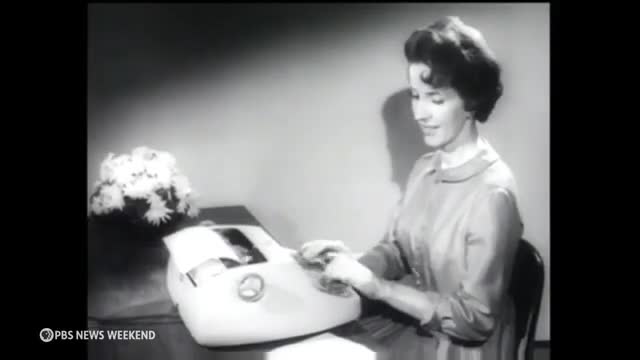Typewriters make a surprising comeback in digital age
This article was created by AI summarizing key points discussed. AI makes mistakes, so for full details and context, please refer to the video of the full meeting. Please report any errors so we can fix them. Report an error »

In a nostalgic nod to the past, typewriters are experiencing a resurgence among enthusiasts seeking a break from the digital world. The IBM Selectric, introduced in 1961, is often hailed as the pinnacle of typewriter technology, but its decline began in the 1980s with the advent of personal computers. Despite this, a new generation is embracing the tactile experience of writing on typewriters, valuing the simplicity and focus they provide.
Tristan Gwanzan, a 26-year-old typewriter aficionado, expresses a desire to \"slow down in a world that's moving so fast,\" highlighting the appeal of a writing process free from digital distractions. This sentiment is echoed by Rodas, co-owner of Philly Typewriter, the world's largest typewriter company, who notes a growing demand for analog experiences. \"People want to unplug,\" he says, emphasizing the typewriter's singular function of writing without the interruptions of notifications or online distractions.
Philly Typewriter not only sells vintage machines but also repairs and rebuilds them, with a waitlist for repairs currently 50 names deep. Ryan Anderson, a recent graduate of the shop's apprentice program, appreciates the mechanical nature of typewriters, stating, \"You can follow every single linkage, see what's actually happening,\" in contrast to the abstract workings of computers.
The shop's basement is filled with typewriters awaiting repair, many of which were donated from attics and garages. Co-owner Brian Kravitz, who has worked on the IBM Selectric since 1975, shares his passion for the intricate mechanics of these machines, which he describes as \"workhorses\" that take up significant space but are cherished for their craftsmanship.
As vintage typewriters become collectible items, enthusiasts like Gwanzan are expanding their collections, with plans to buy a house to accommodate more machines. Others, like Julian Fliss, seek out unique designs that resonate with personal histories, such as a Ukrainian typewriter that connects him to his immigrant roots.
This revival of interest in typewriters reflects a broader cultural shift towards valuing analog experiences in an increasingly digital age, as more individuals seek meaningful connections to their writing processes.
Tristan Gwanzan, a 26-year-old typewriter aficionado, expresses a desire to \"slow down in a world that's moving so fast,\" highlighting the appeal of a writing process free from digital distractions. This sentiment is echoed by Rodas, co-owner of Philly Typewriter, the world's largest typewriter company, who notes a growing demand for analog experiences. \"People want to unplug,\" he says, emphasizing the typewriter's singular function of writing without the interruptions of notifications or online distractions.
Philly Typewriter not only sells vintage machines but also repairs and rebuilds them, with a waitlist for repairs currently 50 names deep. Ryan Anderson, a recent graduate of the shop's apprentice program, appreciates the mechanical nature of typewriters, stating, \"You can follow every single linkage, see what's actually happening,\" in contrast to the abstract workings of computers.
The shop's basement is filled with typewriters awaiting repair, many of which were donated from attics and garages. Co-owner Brian Kravitz, who has worked on the IBM Selectric since 1975, shares his passion for the intricate mechanics of these machines, which he describes as \"workhorses\" that take up significant space but are cherished for their craftsmanship.
As vintage typewriters become collectible items, enthusiasts like Gwanzan are expanding their collections, with plans to buy a house to accommodate more machines. Others, like Julian Fliss, seek out unique designs that resonate with personal histories, such as a Ukrainian typewriter that connects him to his immigrant roots.
This revival of interest in typewriters reflects a broader cultural shift towards valuing analog experiences in an increasingly digital age, as more individuals seek meaningful connections to their writing processes.
View full meeting
This article is based on a recent meeting—watch the full video and explore the complete transcript for deeper insights into the discussion.
View full meeting